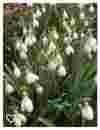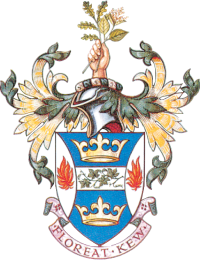Colesbourne Park – the ‘Snowdrop Tour’, Feb 2019
News / 28th Mar 2019
The first Kew Guild event of the year is always a slightly worrying time for the President and I’m sure that this year was no different for Peter Styles. In recent years it has become a bit of a norm that this visit is timed to enjoy gardens well stocked with that harbinger of spring, the humble Snowdrop. However, seasonal weather can play havoc with the best laid plans by making the main flowering time too early or too late, or even worse, just appalling on the day of the visit.
Well, again the weather gods smiled on a Kew Guild visit and 26 members met in The Golden Heart Inn near to Cheltenham, on a mild early spring day with some light cloud. A most convivial lunch was enjoyed by all and it was great to see such a good turn out with some members attending for the first time for a number of years. This reminded us of one of the major benefits of being a Guild member, meeting old friends with shared interests, in pleasant venues. After enjoying lunch and much chatter, we moved off to our destination for the day, Colesbourne Park. Described by Country Life as “Britain’s greatest Snowdrop Garden”, we were expecting a good display.
Colesbourne Park’s story is an interesting one and its Snowdrop collection was started by Henry John Elwes (1846 – 1922) a country squire, traveller and naturalist. In 1894, on one of his first expeditions, he collected many species of bulbous plants from Turkey, including those that became named as Galanthus elwesii. During his life and using much of his collected material, he developed at Colesbourne Park what was known at the time as “the finest collection of bulbous plants in the world”. His interests continued to grow and extended to include a serious passion for arboriculture and he planted at Colesbourne an impressive Arboretum within the Churn Valley. The collection now holds 13 British Champion trees, 35 Gloucestershire Champions and 26 Remarkable specimens. Henry was not impressed at the time with the standard of books written about British trees so he co-wrote with the distinguished botanist, Augustine Henry, Trees of Great Britain and Ireland. The seven volumes were published between 1906 and 1913 and are still considered by many to be “unsurpassed”.



After his death the collections lay more or less undisturbed for fifty years until his grandson Henry Elwes and his wife Carolyn began to identify the Snowdrops, and develop the collection to its present standard through regular division of the bulb clusters. Many new species and cultivars were added and a breeding programme developed new varieties that are unique to this collection. The garden now boasts some 350 species and cultivars and is laid out in large areas of mass plantings interspersed by other spring flowering items. The flagship variety is S. Arnott, named after the Scottish Victorian gardener, and these were in full flower at the time of our visit. The garden being focused on Snowdrops is only open to the public for 3 weeks in February and again for a short period in autumn for visitors to enjoy the Arboretum.


On our visit many interesting species and varieties were enjoyed, with the following being particularly noteworthy, the green leafed Galanthus woronowii, the large Galanthus plicatus “Gerard Parker”, the golden fruited Galanthus “Primrose Warburg”, the unfairly named Galanthus “Nothing Special” and the aptly-named Galanthus “The Whopper”. Colesbourne Park has recognised the passion of the Galanthophile market and tapped into it to create an income stream to help support its favoured charities and we found an impressive 100 cultivars on sale. Whilst many of these were being sold as single flowering potted bulbs at quite reasonable prices, the rarer and more obscure bulbs were commanding increasingly dizzying prices, with the yellow leafed and flowered variety Galanthus elwesii “Carolyn Elwes” being sold at £290.00 per bulb.
The Kew Guild visits are always a shared mixture of horticulture, friendship and gastronomic enjoyment and therefore what better way to end a great day than to enjoy tea and the delightful array of homemade cakes made by the local Women’s Institute in the Long Room (not the one at Lords Cricket Ground) I think at this point our President Peter Styles realised that the weather gods had indeed smiled on him and that he could now relax before seeing his guests leave after an enjoyable first garden visit of the season.
More articles
-

Kewite-mail June 2023
News / 21st Sept 2023
-

The Kew Guild AGM 2023
Events / 25th Aug 2023
